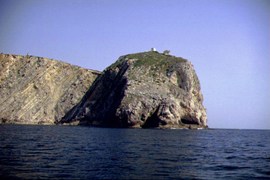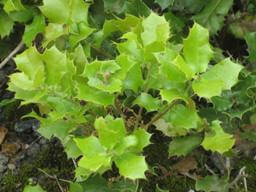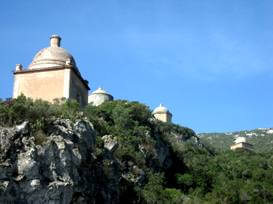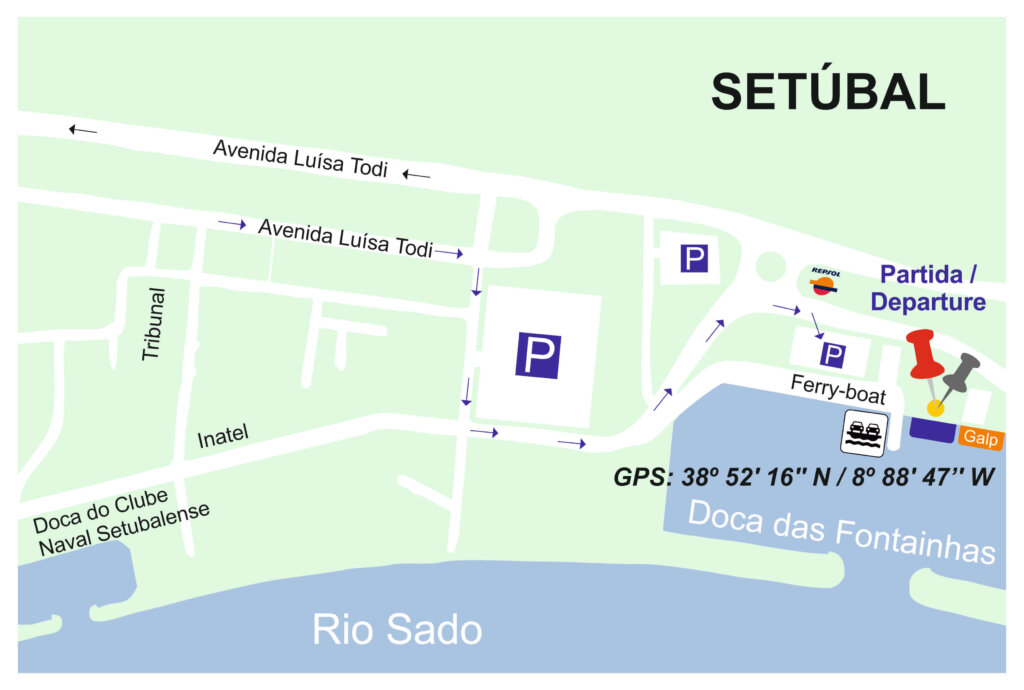The Serra da Arrábida with its landscape of exceptional aesthetic value presents itself as one of the most beautiful landscapes in both Portugal and the world.
Over the years, dedicated writers and artists from the most diverse fields have been inspired by the unique and distinctive beauty of this territory.
From the top of its 501 meters, Formosinho, a vast panoramic view over the entire surrounding region is available.
In this region it is important to mention the Nature Park of Arrábida. Founded in 1976 and with an area of approximately 10,800 hectares, this biogenetic reserve is located in the district of Setúbal.
All of its territory is classified as a site of special interest for nature conservation – CORINE biotope.
It includes several areas of Integral Reserve, such as the Solitary Forest, the Vidal Wood and the Covered Wood.
It is important to mention also the well-known Arrábida breach commonly known as “marble of the Arrábida,” unique to Portugal, having been used extensively in the churches and chapels of Setúbal.
 The Serra da Arrábida has an enormous richness of landscape, since it is a barrier between the coast and the interior, also possessing exuberant vegetation of Mediterranean character. Its coastal cliffs are of unique beauty, as they are an abrupt transition between the marine and terrestrial environments, presenting cliffs with significant geomorphic peculiarities. The southwest massif has the largest cliffs on the seafront of mainland Portugal, with Risco being the highest limestone escarpment in Europe.,which falls on a calm, clear-blue and emerald-green sea.
The Serra da Arrábida has an enormous richness of landscape, since it is a barrier between the coast and the interior, also possessing exuberant vegetation of Mediterranean character. Its coastal cliffs are of unique beauty, as they are an abrupt transition between the marine and terrestrial environments, presenting cliffs with significant geomorphic peculiarities. The southwest massif has the largest cliffs on the seafront of mainland Portugal, with Risco being the highest limestone escarpment in Europe.,which falls on a calm, clear-blue and emerald-green sea.
The Espichel platform is a promontory at the westernmost end of the Arrábida fold, with all the magic and sanctity associated with these places. The slopes of the Louro mountain range provide a continuous framework of the Barris Valley across a mountainous ridge. The Serra de S. Luís / Gaiteiros is centrally located between the valley of Barris and Alcube. Chã da Freira offers a view over an expansive area, its flora takes on a singular variety of tones in accordance with the seasons, in contrast to the constant green of the vegetation that surrounds it. The Comenda, finally, has a vegetal cover of arboreal size that stands out very much from its surroundings.
The Arrábida is formed by a multiple landscapes with rare characteristics, unique in national and even international contexts.
Its South-facing orientation is unique on the Portuguese West coast and offers very effective protection against the prevailing North winds. This reduces waves, and that is favorable to the development and reproduction of many marine species. These distinctly calm waters in Arrábida contribute to the existence of a considerable number of rare species in Portugal.
The high diversity of marine flora and fauna is one of its most striking characteristics. More than 1,000 animal species and more than a hundred algae are recognized here.












 The Convent of Arrábida encompasses the Convento Velho, located at the summit of the mountain range, near the Convento Novo and the Garden and the Sanctuary of Bom Jesus.
The Convent of Arrábida encompasses the Convento Velho, located at the summit of the mountain range, near the Convento Novo and the Garden and the Sanctuary of Bom Jesus.





